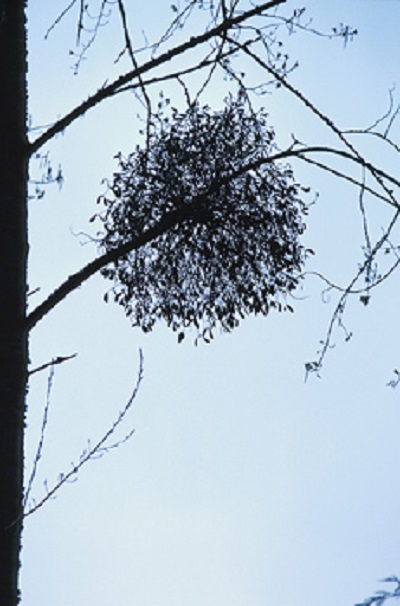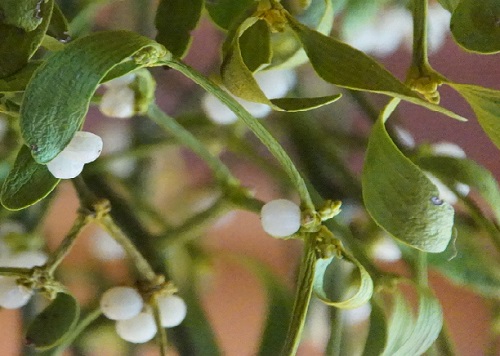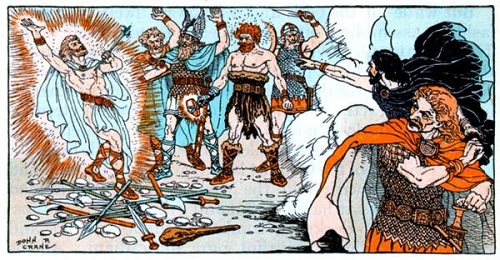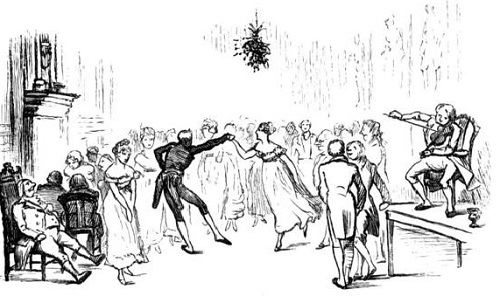“I Saw Mommy Kissing Santa Claus Underneath the Mistletoe Last Night” are words we all know. But we probably don’t know too much about the plant. It has a deep history, that sort of makes sense that it is associated with kissing.
The mistletoe plant, of which there are about a thousand varieties (none that grow here in Canada), is unique – it is hemiparasite. It grows on the branches of deciduous trees, taking some of its nutrients from the host tree. The mistletoe plant does not kill the tree and can have a positive effect on biodiversity
When the leaves are off the host tree, the mistletoe can be quite noticeable.

Its white berries are good food for birds but are poisonous for people. Mistletoe has been used historically in medicine, using the berry, leaf, and stem . for its supposed value in treating arthritis, high blood pressure, cancer, epilepsy and infertility.

There are many references to mistletoe in many cultures.
There is a Norse legend of Balder, a Norse god. After dreams foretelling of Balder’s death, his mother, Frigga, made every plant and animal swear to never hurt him, making him invincible, but the other gods entertained themselves by trying to kill him using a variety of weapons.
Loki, an evil god, realized that mistletoe had been overlooked in the vow making, so he contrived to make a weapon out of mistletoe and killed Balder with it.
Frigg’s tears then became the white berries. She decreed the plant would be a symbol of love, hence, the plant’s association to love and kissing.

The Romans associated mistletoe with peace, love and understanding and hung it over doorways to protect the household as part of their Saturnalia festival.
In Scandinavia, mistletoe was considered a plant of peace, under which enemies could declare a truce or warring spouses kiss and make-up.
Before Christmas Trees became popular in England a popular form of Christmas/mid winter decoration was the Kissing Bough/Bunch/Ball made from wooden hoops and evergreens and ribbons. Sometimes mistletoe was hung beneath them.
In the center there would be a clay figure of an infant to represent the baby Jesus. These “holy boughs” were hung from ceilings in castles and big houses to bring good luck to all who passed under.

The Puritans frowned upon them and all Christmas decorations, but they reappeared when Queen Victoria ruled England. 'A Christmas Carol', published 1843, mentions kissing under the mistletoe. The tradition dictated that a man could kiss any woman standing underneath mistletoe, and that bad luck would befall any woman who refused the kiss.
A berry was picked from the sprig of Mistletoe before the person could be kissed and when all the berries had gone, there could be no more kissing!
Custom is that it is to be burnt on the 12th Night – January 5, to stop the kissing.
Today crafty people are making some beautiful Kissing Balls, with and without mistletoe. It is a beautiful decoration, one that symbolizes peace and love. And as a plant, mistletoe reminds us that we depend on others.










